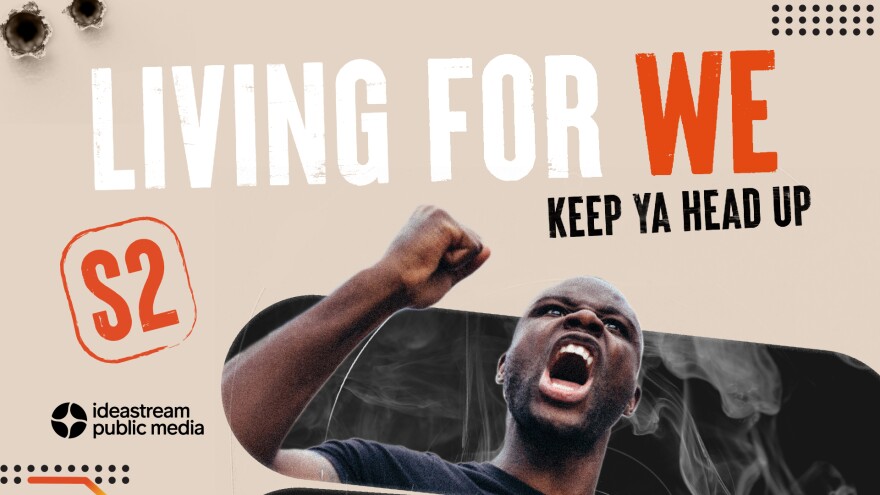Living for We: Season 2 now available

Hear the latest episode:

S2E5: Dear Mama
Through pain, resilience, and unwavering love, mothers carry the weight of loss in ways the world can never fully understand. This episode of Living For We: Keep Ya Head Up shares the voices of mothers who have lost a child to gun violence. It is a testament to their strength, a reflection of the love they continue to hold, and a call for change in communities torn apart by tragedy.
We meet Marshawnette Daniels, the mother of nine-year-old Saniyah Nicholson, who was hit by a stray bullet while sitting in a car eating an ice cream cone. We also hear from Shanika Jackson, who lost her 20-year-old son Demetrius. Worried that he was falling in with the wrong crowd, Shanika continues to seek justice for her son’s murder.
Grief counselor and founder of Not Another Child, Oresa Napper-Williams, understands the profound pain of losing a child to gun violence. Having experienced this loss firsthand, she shares how she found a way forward and offers strategies for navigating the grief process.
These are stories of heartbreak and healing, of women who raised their children with love, only to have them taken too soon. They speak of memories, of dreams left unfulfilled, and of the fight to ensure no other mother endures the same pain. Because a mother’s love never fades—it transforms into a force for justice.
Listen to Season 2: Keep Ya Head Up
In the Cleveland area, and in cities across the country, teens and young adults are dying in our streets – victims of gun violence. There's no question: it’s an epidemic. It's the leading cause of death for teenagers. Young Black men often feel like they a target on their backs. Kids in schools face metal detectors, police presence in the hallways, and shootings at football games. Jr. High students are carrying ghost guns.
This season, we're asking what can be done to reverse cycles of violence and retaliation when shooters value their reputation over their own lives. We know where this violence occurs, we know what drives it. How can we start Living For We and decrease the violence?
Every bullet fired creates two victims: the child in front of the gun, and the one pulling the trigger.
We'll talk with people who are navigating streets where gun violence is normalized – seen as no big deal, while at the same time ruining lives. We'll listen to those fighting for their children and their communities, putting in work to uplift their neighborhoods and create meaningful change. This is more than a podcast, it's a resource for communities tired of chaos and ready to build peace.
Has gun violence impacted you or someone you love? Share your story. Your story might be shared in an upcoming episode.
Season 1

In 2020, cityLAB of Pittsburgh released a study that ranked Cleveland dead last in terms of livability for Black women. On Living For We, we talk to Cleveland's Black women about their experiences at work, at school, in the doctor's office, and in community with each other in an attempt to answer the question... is Cleveland really as bad as they say it is for Black women?
Resources
This is more than a podcast, it's a resource for communities tired of chaos and ready to build peace. Click here to see a list of resources.
Award-winning podcast

Living for We has received the following honors:
- Regional Murrow Award: Excellence in Diversity, Equity, and Inclusion
- Webby People's Voice: Diversity, Equity & Inclusion
- Davey Awards: Diversity, Equity & Inclusion (Gold), Series (Gold), Society & Culture (Silver)
- W3 Awards: Cause Awareness (Gold)

